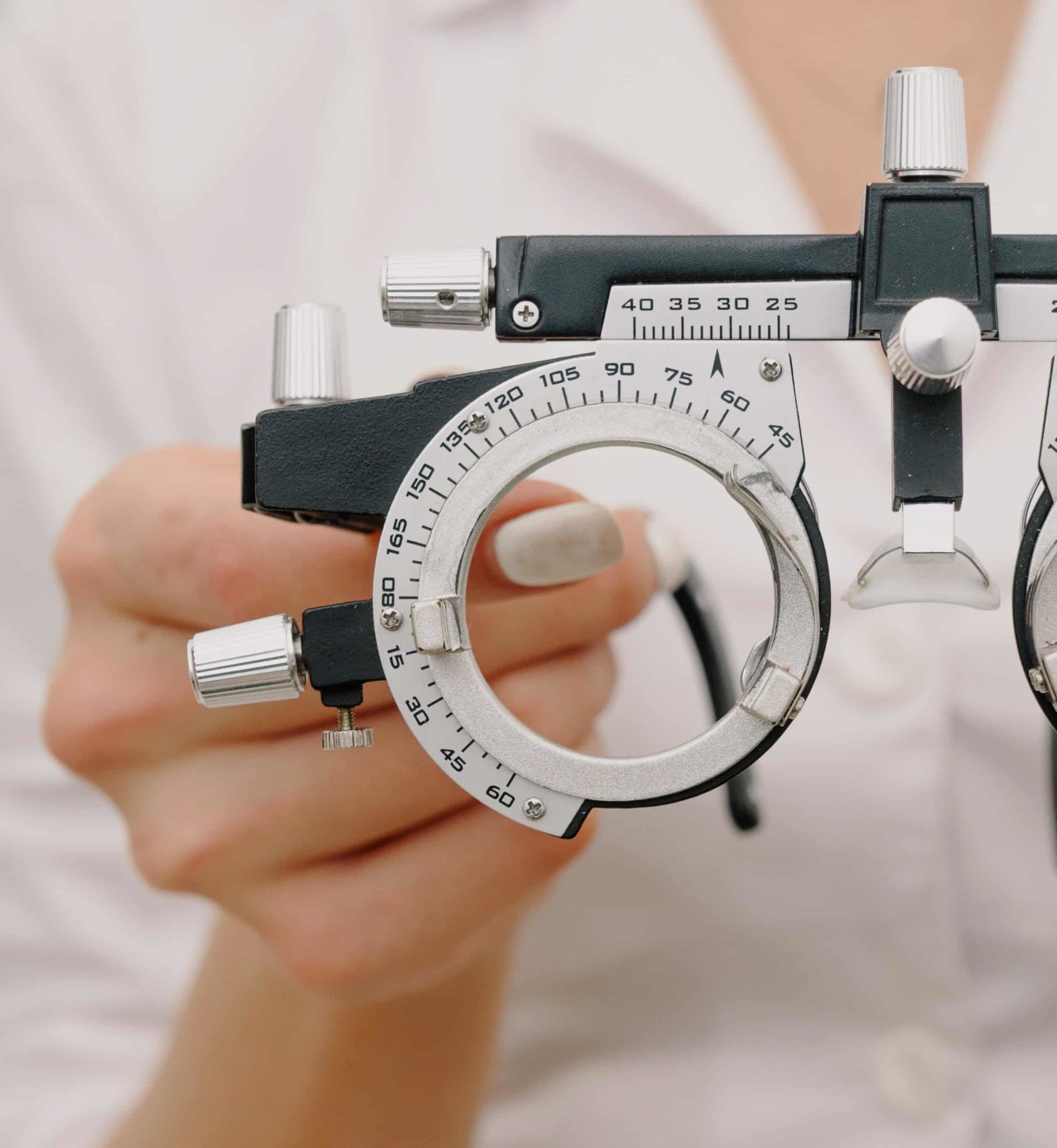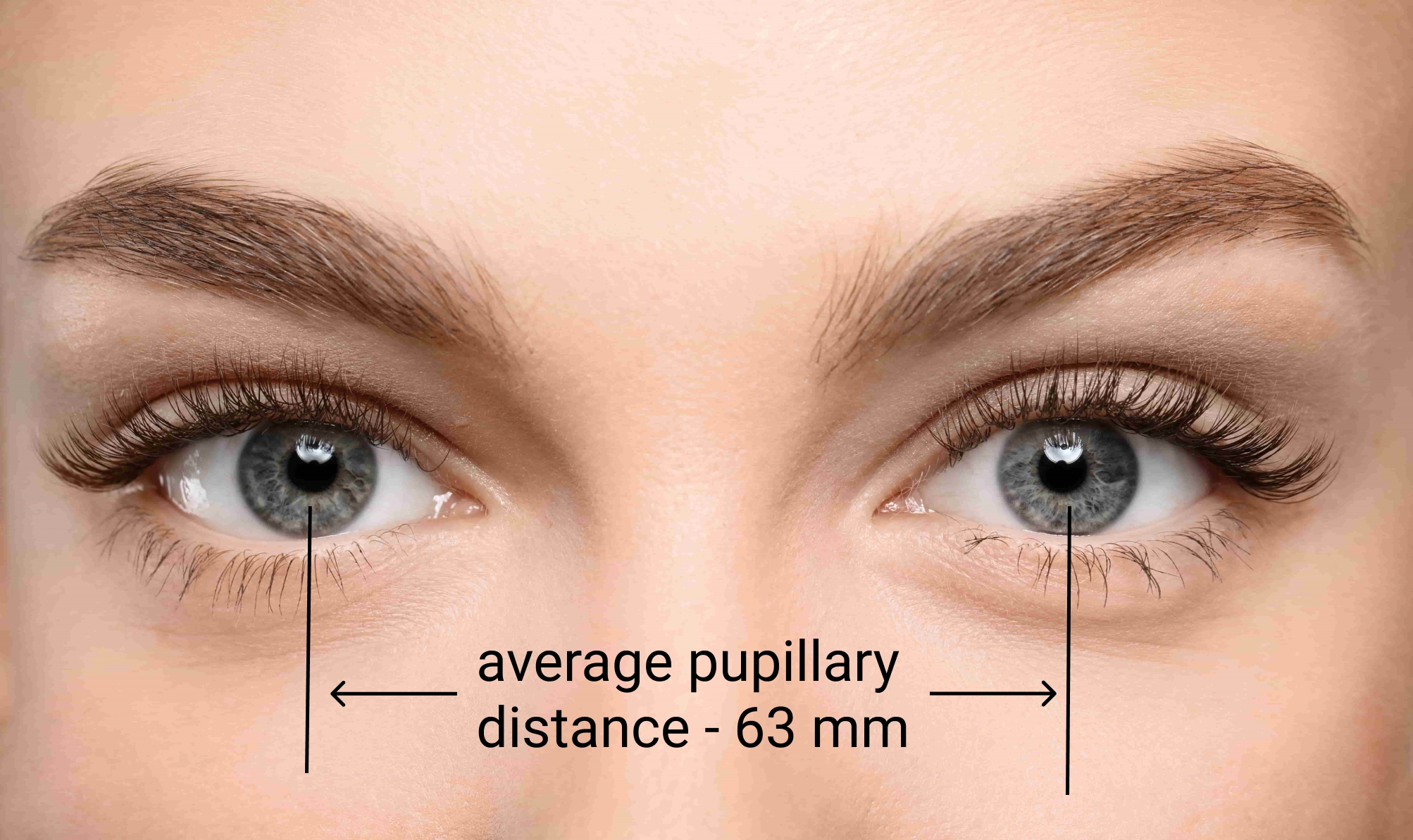How to measure your pupillary distance?
What is Pupillary Distance?
Pupillary distance (PD) refers to the distance between your pupils. It's sometimes referred to as inter-pupillary distance (iPD). PD can be expressed in millimeters (mm), either as a monocular or binocular measurement. A binocular, or single, reading is simply measured from one pupil to the other. A monocular, or dual PD, refers to the distance between the center of one pupil to the bridge of the nose. Two measurements are needed, one for each eye; these should add up to the binocular PD reading.
PD can be measured for distance or near, depending on fixation during measurement. If the patient is looking at a far object, distance PD is measured. If the patient is looking at a close-up target, near PD is measured. If the range is not specified, one can assume that the PD is for distance.
A PD measurement is necessary to make a pair of glasses. It tells the optician where to align the lenses in the frame for the best possible vision. The average pupillary distance for adults is 63 mm binocularly. The vast majority of adults have a binocular PD between 50-75 mm. Near PDs are smaller. Children’s single PD measurements range from 41-55mm. Children’s PDs will change as they grow. Once mature, an adult’s PD should change very little, if at all.

Why Is PD Important?
PD is a very important measurement in the optical world. The optician uses your PD to align the lenses in your glasses. This ensures that you are looking through the center of your lenses. If you weren’t looking through the center of your lenses, your vision may be blurry or distorted. This holds true even with the right prescription in place. Monocular PD is more precise and can be used for any type of glasses. It is generally required for progressive addition lenses (PAL). Single vision and bifocal lenses usually only need a single PD. Bifocals and progressive lenses generally need both distance and near PD. Single vision lenses need relevant PD. This will depend on whether the lenses are being used for distance, computer, or reading.
What Are the Ways of Measuring PD?
Pupillary distance is sometimes measured by the optometrist during your eye exam. Otherwise, it is measured by the optician when you buy your glasses. If you’re wondering how to find pupillary distance, you may want to find a copy of an old glasses prescription. Remember, adult PD usually does not change with time. Children’s PDs, on the other hand, do change as they grow. If you can’t find the measurement, you can always measure it when ordering your glasses form Overnight Glasses in the prescription entry step. Simply click "measure PD" and our software will measure it using your phone or computer webcam. Here are some additional ways to measure PD yourself!
Measure your PD with a friend
If you have a friend who’s willing to help, this will make it easier to measure PD. You will need a pupillary distance ruler, which just means it has millimeter (mm) readings on it.
- Position yourself at least 8 inches (20 cm) from your friend, with your eyes at a level height.
- Look straight ahead.
- Close your left eye and have your friend close her/his right eye.
- With the ruler close to your face, have your friend align the zero with the center of your right pupil. S/he will then measure the distance to the center of the bridge of your nose. This is your right monocular PD.
- Now close your right eye and have your friend close her/his left eye.
- With the ruler right up to your face, have your friend align the zero with the center of your left pupil. S/he will then measure the distance to the bridge of your nose. This is your left monocular PD.
If you want a single PD, simply add them together. It’s best to measure several times (at least three) to check for consistency.
Measure your PD on your own

Here’s how to measure pupillary distance on your own. Again, you will need a ruler with millimeter (mm) scales on it. You’ll also need a mirror.
- Position yourself at least 8 inches (20 cm) away from the mirror.
- Close your left eye and look straight into the mirror.
- Place the ruler close to your right eye. Now measure the distance between the bridge of your nose and the center of your right pupil.
- Next, close your right eye and look straight into the mirror.
- Repeat the measurement for the left pupillary distance.
If you want a binocular measurement, just add the right and left reading together. You’ll want to repeat the measurement several times (at least three) to ensure reliability.
Measure your PD using an app
EyeMeasure
If you’re wondering how to measure pupillary distance online, there’s an app for that. It’s called EyeMeasure. It’s available for iPhone or iPad and it’s free! Unfortunately, it is not available on the Google Play store at this time.
Not only does it measure PD for distance and near to 0.5 mm accuracy, but it also measures seg height. This is a measurement necessary to make bifocals. This app is only able to measure binocular PD.
GlassesOn
GlassesOn is another app available through the iOS app store, as well as Google Play. It is free as well. Like EyeMeasure, it gives a single pupillary distance measurement for both eyes. However, its accuracy is only to 2 mm, as compared to 0.5 mm for EyeMeasure.
GlassifyMe
GlassifyMe is available through the iOS app store and Google Play. It is priced at $3.99-4.49 but does measure monocular PD, in addition to binocular.
If you’ve been wondering how to measure PD for glasses, now you’ve got answers. Whether you calculate it on your own, with a friend or using an app, you’ll get your PD one way or another!
